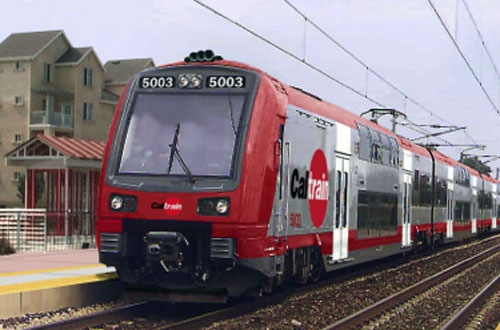Caltrain releases electrification project draft environmental report
Written by Jenifer Nunez, assistant editor
Caltrain has released the Draft Environmental Impact Report (EIR) for the planned electrification of the corridor between San Jose and San Francisco, Calif., which will upgrade the signal system, implement Positive Train Control, electrify the corridor and purchase new high-performance electric multiple units (EMUs).
Caltrain will conduct four public meeting in March and April to obtain public comments on the Draft EIR for the Peninsula Corridor Electrification Project (PCEP), which is part of the Caltrain Modernization Program.
Key local issues examined in the Draft EIR include potential impacts related to noise, trees and other vegetation, traffic, aesthetics, disruption due to construction and other issues as required by the California Environmental Quality Act (CEQA).
An electrified Caltrain system, scheduled to begin operations in 2019, is expected to improve regional air quality by up to 84 percent by 2020, increase Caltrain daily ridership to nearly 70,000 by 2020 and more than double current weekday ridership with the downtown extension in place by 2040. It also is projected to take more than 600,000 daily vehicle miles off the region’s roadways by 2040 and weekday service at the Atherton and Broadway stations will be restored.
The project includes installation of an overhead contact system (OCS) and requires the construction of two substations, one switching station and seven paralleling stations.
One of the key issues discussed in the Draft EIR is tree removal. This was analyzed based on a worst-case OCS alignment of poles. There are approximately 19,000 trees and other vegetation in the immediate Caltrain corridor area. The worst-case OCS configuration could result in the removal of more than 2,200 trees and vegetation. The Draft EIR identifies vegetation mitigations including potential OCS alignment options. Alternative pole configurations could help reduce the number of impacted trees and also reduce property needs outside of the rail right-of-way.
“Now that we know what the potential worst-case local impacts are and have identified feasible mitigation measures in the Draft EIR, Caltrain will continue to work with the community partners to figure out how best to apply the identified mitigation to help reduce impacts,” said Marian Lee, executive officer for Caltrain Modernization.





